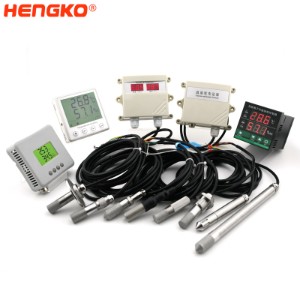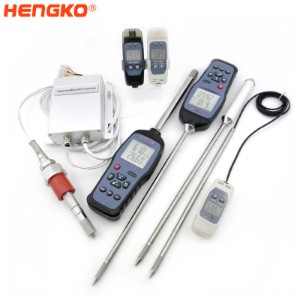Safety is the Most Important for all Battery Factory, So What is The 1st Safety Measures Should Take by Battery Factory? The Answer is Temperature And Humidity Monitoring In Battery Warehouse and Manufacturing Process.
1. Why it is So Important to Monitor Battery Temperature ?
Faults in the battery and its connecting circuits can affect the battery temperature. Common faults that cause battery temperatures to rise include ground faults, shorted cells, poor ventilation or insufficient cooling, and runaway charging. Battery temperature monitoring can identify these faults and provide early warning before a thermal runaway occurs.
If the battery temperature is not monitored and properly regulated, permanent damage may occur. At best, some mechanical deformation or chemical composition changes can occur, resulting in expensive battery replacements. In the worst-case scenario, the battery could rupture, explode, leak chemicals, or cause a fire.

2. Where and How to Monitor the Battery Temperature ?
Elevated battery temperatures are typically found on the negative side of the battery. When applying normal operating conditions.
Such as charging and battery loading, the temperature should not be higher than the ambient temperature by approximately 3°C. Two temperature sensors can be deployed, one located on the negative side of the battery and the other to monitor the ambient temperature. The difference between the two sensors can then be used to indicate potential battery health problems or faults in the connected circuitry.
3. Battery Temperature Monitoring
What is the ideal operating temperature of a battery ?
Simply put, a battery is an energy storage device. It contains chemicals and the electric current results from a reaction between these chemicals. As with all chemical reactions, as the temperature increases, so does the rate of reaction. This increase in the rate of chemical reactions can improve battery performance to some extent.
1. If the temperature is too high, permanent damage may be done to the chemicals (electrolytes), thus shortening battery life and the number of charge cycles. The worst-case scenario is the occurrence of thermal runaway.
2. At lower temperatures, the chemistry of the battery slows down. The battery's internal resistance increases, and its ability to generate a high current on demand is reduced. That is one reason why a car battery may not be able to produce enough current to start the engine on cold days efficiently. At shallow temperatures, the electrolyte inside the battery may even freeze, causing the battery to stop operating altogether.
Thermal runaway occurs when the heat generated by a chemical reaction does not dissipate fast enough and provides more heat for the reaction. This chain reaction causes the battery temperature to rise further and damages the battery cell. More severe than the damage to the battery that must replace is the risk of fire and explosion. If the battery does not expel heat fast enough, temperatures can quickly reach the boiling point or even higher. The physical parts of the battery will melt, release explosive gases, and eject battery acid. At about 160°C, the plastic parts of the battery will melt.
4. Humidity Monitoring of Batteries
In the electronic workshop, the humidity is too high, and if it encounters a low temperature, it is easy to produce a condensation phenomenon. Water droplets condensing on electronic components will cause damage to the precision of the instrument. So it needs the hengko’s temperature and humidity sensor to detect the humidity, according to the change of data to monitor and adjust the environment temperature and humidity, to protect the battery while reducing the unnecessary loss of the factory.
5. Battery Temperature and Humidity Measurement
A simple manual battery temperature monitoring system that allows workers to check battery packs once or twice a week. Hengko recommends using a handheld temperature and humidity meter that can be used to check the temperature and humidity of the battery storage or battery production environment in the electronics shop regularly. Here is a tip: the difference between the battery and the ambient temperature is not more than 3℃. The use of high precision temperature and humidity handheld table approved by the Shenzhen Institute of Metrology can accurately measure the temperature and humidity data in the air, as an effective reference can be compared with the internal temperature and humidity of the battery.
6. The Effect of Battery Temperature on Charging
To charge the battery efficiently and safely, the charging voltage should be accurately controlled. The ideal charging voltage varies with temperature. Using the battery temperature sensor as an input to the charging system, a decision can be made to adjust the charging voltage. As the battery temperature increases, the charging voltage should decrease.
So it is very important to know the temperature and humidity around the battery, because the ambient temperature will affect battery performance, but we can control and change the ambient temperature to make the battery work normally. Anyway, it is very Important to Monitor Battery Temperature, How do you think? if have any questions , can Contact HENGKO to discuss and find the right solution for your battery.
Also You Can Send Us Email Directly As Follow : ka@hengko.com
We Will Send Back With 24-Hours, Thanks for Your Patient !
Send your message to us:





